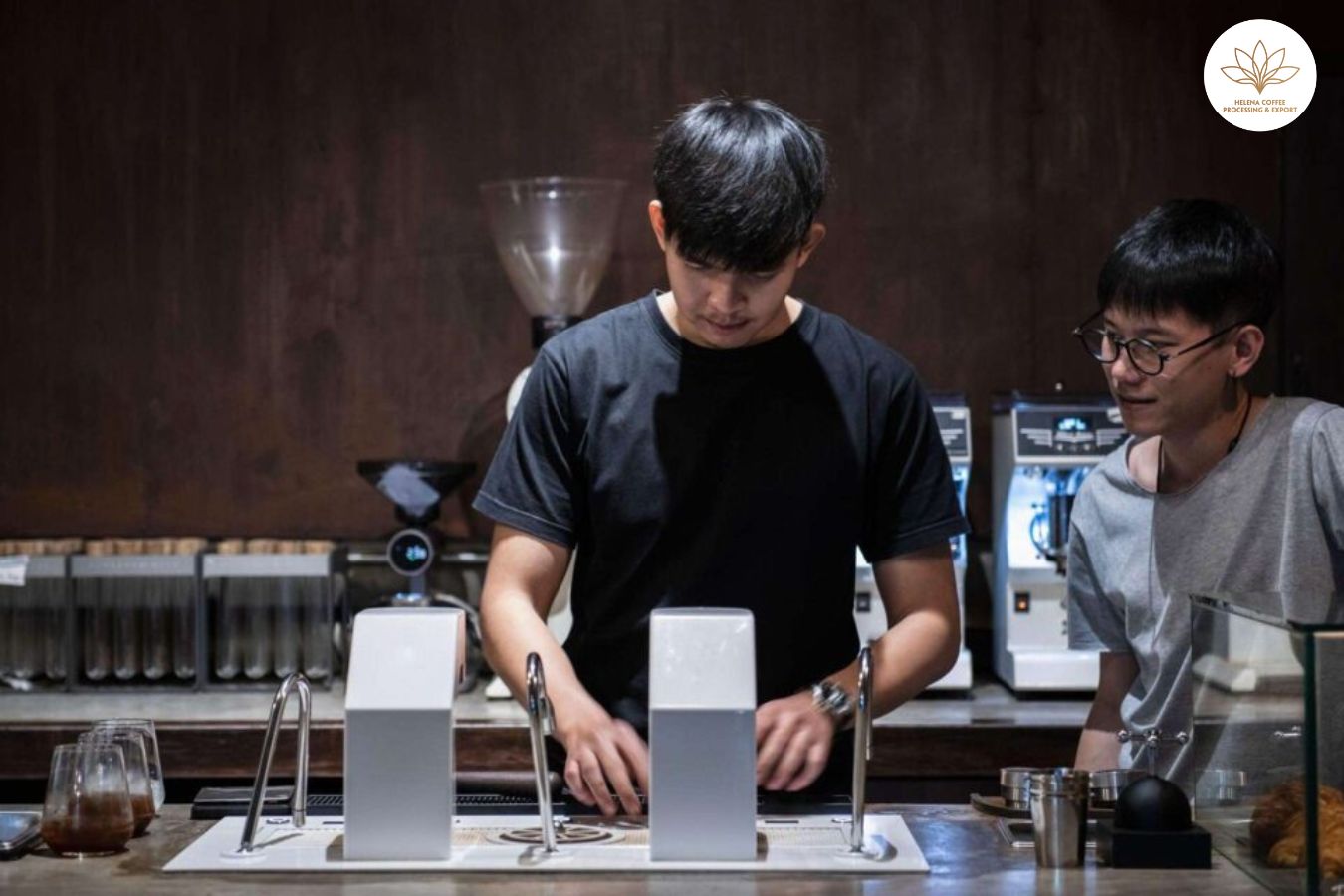
Are you thinking of exporting your coffee: While consumers often encounter coffee marketing focused on the roasted bean, the backbone of the global coffee industry lies in its green state, long before it reaches the roaster’s hands.
Yet, mastering the intricacies of handling green coffee remains a challenge for many producers. Structural barriers such as inadequate infrastructure, limited access to training, and technical resources shape the reality for coffee growers in numerous producing regions.
Understanding the nuances of processing green and parchment coffee predominantly resides with those who possess the means and direct access to the global coffee market.
In my quest to unveil the key facets of green coffee export, I engaged in discussions with Jorge Altamirano, the visionary behind Santa Rosa de Copán’s esteemed specialty coffee hub, Kaldi’s Koffee Shop. Additionally, I gleaned insights from Lourdes Villeda, a seasoned cupper and director of quality control and exports at Finca Terrerito. Their expertise sheds light on this vital stage of the coffee journey. Join me as we delve deeper into their perspectives.
Green coffee storage and market
The realm of green coffee classification and transactions remains shrouded in mystery for many coffee consumers. It’s a domain largely inhabited by bulk buyers and producers equipped for export. Typically, the transportation of coffee across the globe relies heavily on maritime routes, driven by considerations of profitability and logistics costs.
Navigating the threshing process, enduring prolonged travel durations, and managing storage in containers and ports pose perennial challenges for aspiring exporters. These logistical hurdles necessitate significant financial investments and resources, barriers not every coffee grower can surmount.
The weight of parchment and its impact on coffee yield during threshing necessitate careful consideration. Hence, there’s a historical preference for trading and exporting already-threshed coffee due to its organic stability and reduced loss of characteristics.
Jorge underscores the potential longevity of well-stored green coffee, asserting, “Under optimal conditions, green coffee can retain its quality for over two years.” However, achieving such preservation demands meticulous attention to a myriad of conditions.
In the global market, possessing the capacity and infrastructure for storing vast quantities of coffee wields considerable influence. Lourdes elucidates how major buyers can manipulate prices by releasing coffee reserves accumulated over several harvests. This dynamic disproportionately affects small-scale producers, who often find themselves at the bottom of the value chain with limited tools for competition.
Becoming established as an exporter is no small feat; it’s a laborious journey fraught with customs procedures and bureaucratic entanglements. “Exporting coffee isn’t merely about shipping; it’s a complex process, particularly given its organic nature,” Jorge emphasizes.
Classification variations
Beyond mere storage, the sorting process of green coffee prior to shipment is paramount. Export-bound coffee must adhere to specific criteria, yet these standards lack universalization across countries.
Consequently, a multitude of classification systems exist globally, typically assessing grain size, density, color, physical attributes, and defect count. Jorge identifies the absence of a standardized system as a significant industry challenge.
Sorting commences post-threshing, aiming to conduct a thorough physical analysis to ascertain the lot’s quality. Typically, this assessment begins with an understanding of the yield factor within the dry parchment.
Size stands as a prominent grading characteristic, determined via grading sieves. “Larger and denser grains offer greater potential for nuanced roasting,” Jorge affirms.
However, Lourdes acknowledges a flaw in this approach: traditional classifications often overlook the nuanced qualities of specialty coffee varieties with diverse physiological traits.
Consequently, exporters increasingly prioritize the quality of logistics and storage processes. Many transactions initiate with sample exchanges, initiating a traceability chain that garners value in this sphere.
At this transactional tier, buyers wield significant influence over final conditions for classification and preparation. Lourdes highlights instances where clients reject plastic packaging, favoring methods that preserve coffee integrity and moisture content, safeguarding its inherent properties
Stability and quality: the keys to green trading
Achieving stability in green coffee enables producers and exporters to navigate marketing and transportation without immediate storage concerns. However, amidst this process, ensuring quality remains paramount.
Thus, the development of robust logistics protocols becomes imperative to uphold control and oversight over shipments. “Traceability of coffee ranks high among customer demands,” emphasizes Lourdes.
A standard feature in storage practices is the adoption of airtight GrainPro-type bags. Jorge underscores their efficacy in safeguarding coffee quality.
Moreover, leveraging technical tools is indispensable for monitoring green coffee storage, particularly those facilitating measurement and regulation of variables like humidity.
Lourdes elaborates on their approach at Finca Terrerito, where they’ve devised protocols for humidity assessment utilizing both traditional meters and water activity meters, providing precise insights into coffee humidity levels and enabling tailored storage conditions.
Despite the absence of global standardization in green coffee classification systems, Lourdes and Jorge concur on the industry’s gradual adoption of protocols for processing, storage, and transportation.
Foremost among these protocols is the establishment of traceability, offering exporters the means to guarantee coffee quality from procurement to delivery, enhancing confidence and accountability throughout the supply chain.
Challenges in green coffee processing
Processing and marketing green coffee presents a formidable challenge for producers, irrespective of their scale or production volume. From the outset, navigating compliance with regulations and procedures emerges as a significant hurdle, especially amid the intricate bureaucracy inherent in customs management systems across various destinations.
In response to these complexities, many producers find it advantageous to outsource such services, engaging commercial intermediaries who possess established operations. Lourdes underscores the importance of efficient customs operations, emphasizing that inexperienced handling at this juncture can result in significant financial repercussions.
“Accessing comprehensive information and expert guidance on all customs matters at both origin and destination is paramount to preempting inconveniences,” notes Jorge.
However, maintaining continuous monitoring and traceability poses ongoing challenges. Lourdes acknowledges that ensuring these features necessitates meticulously structured processes supported by technological tools throughout the processing chain, resources that may not always be readily available.
Nevertheless, some exporting producers opt to retain traceability by preserving samples of their processed lots. While this approach doesn’t offer continuous control over shipments, it serves as a valuable quality reference for the dispatched batches.
FAQS:
